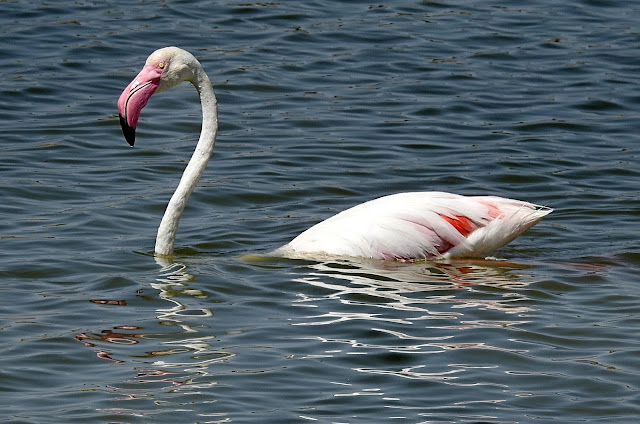%2020.jpg)
The Ocellated lizard (Timon lepidus) is a member of the family Lacertidae (wall lizards). It is one of the largest members of its family. The species is can be found only in southwestern Europe.
The Ocellated lizard is a robust reptile with a serrated collar. The male has a characteristic broad head. It has thick, strong legs, with long, curved claws. The dorsal background color is usually green, but sometimes grey or brownish, especially on the head and tail. This is overlaid with black stippling that may form a bold pattern of interconnected rosettes. The underside is yellowish or greenish with both the male and female sporting bright blue spots along the flanks, though the male is typically brighter in color than the female. Young are green, grey, or brown, with yellowish or white, often black-edged, spots all over.
Ocellated lizards are found throughout the Iberian peninsula (Spain, Portugal, Gibraltar), and are patchily distributed in southern France and extreme northwestern Italy. These lizards live in various wild and cultivated habitats. They are rare at higher altitudes. They prefer dry, bushy areas, such as open woodland and scrub, old olive groves, and vineyards, and are sometimes found in more open, rocky, or sandy areas.
%2021.jpg)
The Ocellated lizard (Timon lepidus) is a member of the family Lacertidae (wall lizards). It is one of the largest members of its family. The species is can be found only in southwestern Europe.
The Ocellated lizard is a robust reptile with a serrated collar. The male has a characteristic broad head. It has thick, strong legs, with long, curved claws. The dorsal background color is usually green, but sometimes grey or brownish, especially on the head and tail. This is overlaid with black stippling that may form a bold pattern of interconnected rosettes. The underside is yellowish or greenish with both the male and female sporting bright blue spots along the flanks, though the male is typically brighter in color than the female. Young are green, grey, or brown, with yellowish or white, often black-edged, spots all over.
Ocellated lizards are found throughout the Iberian peninsula (Spain, Portugal, Gibraltar), and are patchily distributed in southern France and extreme northwestern Italy. These lizards live in various wild and cultivated habitats. They are rare at higher altitudes. They prefer dry, bushy areas, such as open woodland and scrub, old olive groves, and vineyards, and are sometimes found in more open, rocky, or sandy areas.
Ocellated lizards are territorial solitary reptiles that meet only for mating. They are diurnal in their habits but during hot summer days may switch to nocturnal activity. Ocellated lizards usually stay on the ground, but climb well on rocks and in trees. They can dig holes and sometimes use abandoned rabbit burrows. They also often bask on roadsides. During the coldest month of the year, Ocellated lizards retreat underground for hibernation.
Ocellated lizards are carnivores. They mainly eat large insects, especially beetles, and snails, and also rob birds’ nests and occasionally take reptiles, frogs, and small mammals. They may also eat fruit and other plant matter, especially in dry areas.
Ocellated lizards breed in late spring or early summer. Males are territorial in spring and fight in the breeding season. The female lays up to 22 eggs in June and July about 3 months after mating, hiding them under stones and logs or in leaf litter, or in loose damp soil. It tends to lay fewer, larger eggs in dry areas. The eggs hatch in 8 to 14 weeks and the young become reproductively mature at 2 years of age.
%2020.jpg)







%2020.jpg)
%2021.jpg)






%20(Passer%20domesticus)%2020.jpg)
%20(Passer%20domesticus)%2021.jpg)
%20(Serinus%20serinus)%2020.jpg)

%2020.jpg)
%2021.jpg)
%2032.jpg)
%2031.jpg)
%2030.jpg)








%2020.jpg)
%2021.jpg)
%2022.jpg)
%2020.jpg)

%2020.jpg)
%2020.jpg)
%2020.jpg)
%2021.jpg)
%2023.jpg)
%2024.jpg)